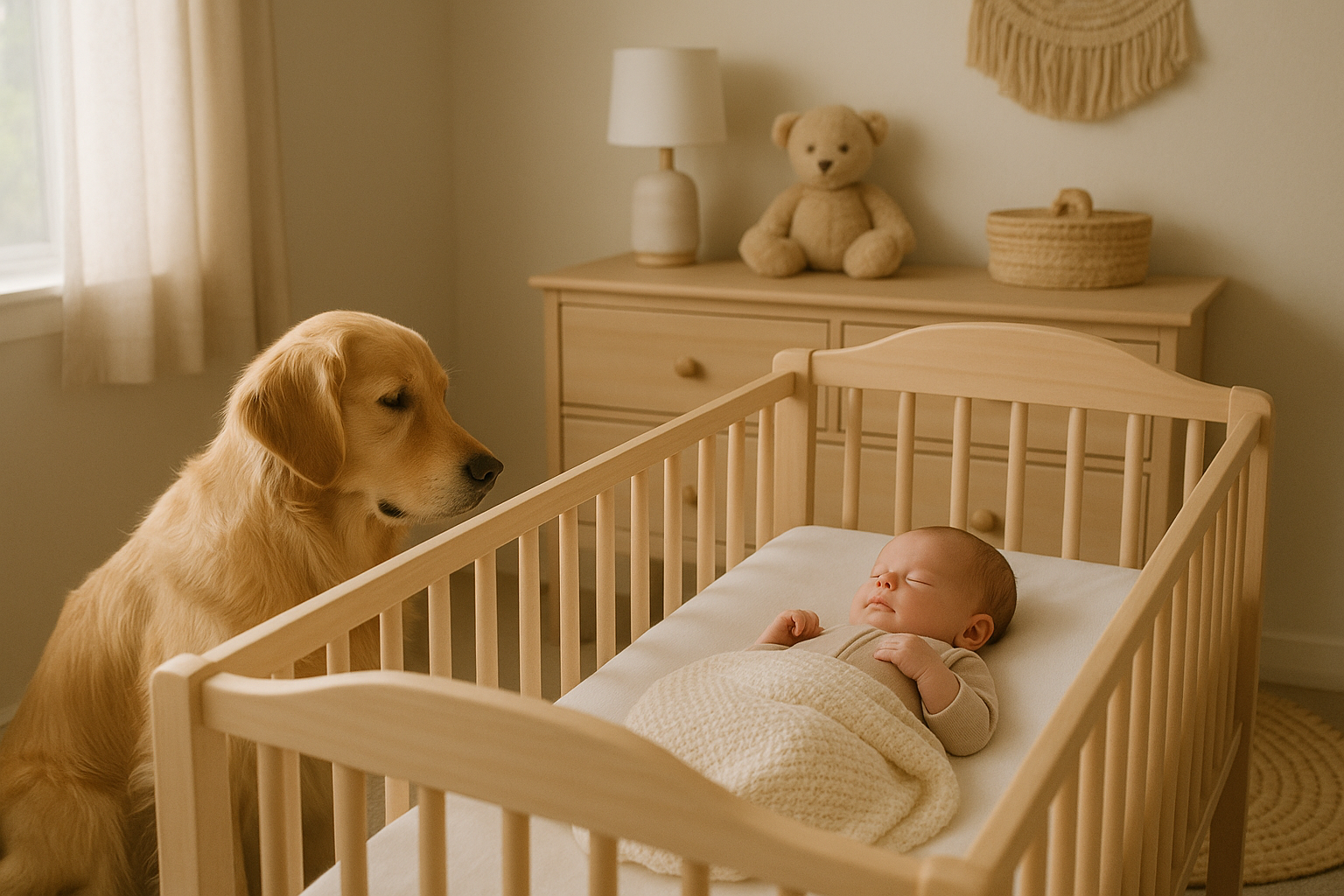Tips to Help Your Pet Adjust to a New Baby – Worried about how your pet will react to a new baby? Discover expert tips to help your pet adjust smoothly and maintain harmony at home.
Introduction
Bringing home a new baby is one of life’s most exciting changes—but if you have pets, it can also be a source of uncertainty. Many pet owners wonder how their pet will adjust to a new baby, and how to prepare in advance to avoid stress, jealousy, or behavioral issues.
This guide offers practical, compassionate strategies to help ease your pet into this new phase of family life. With a little planning and patience, pets and babies can coexist peacefully—and even form beautiful bonds.
Why Preparing Your Pet Matters
Pets thrive on routine and familiarity. A sudden change—like a crying newborn, new smells, or less attention—can cause anxiety or acting out. Common reactions include:
- Barking or whining when the baby cries
- Jealousy or clingy behavior
- Accidents inside the house
- Destructive chewing or scratching
- Avoidance or withdrawal
Proper preparation before and after the baby’s arrival can make all the difference in ensuring a smooth transition.
Start Preparing During Pregnancy
1. Gradually Shift Attention
If your pet is used to being the center of attention, start spreading out your interactions. Spend time with them at different hours and let them have quiet time alone. This reduces the shock when your time becomes more limited.
2. Create Baby-Free Zones
Establish certain areas—like the nursery—as off-limits. Use baby gates or closed doors and reinforce the boundaries gently but consistently. This helps set expectations early.
3. Familiarize Your Pet with Baby Sounds
Play recordings of babies crying, cooing, or babbling. Start with low volume and gradually increase it. Observe your pet’s reaction and reward calm behavior.
4. Introduce New Scents
Let your pet sniff baby lotion, wipes, and blankets weeks before the baby arrives. This builds familiarity with the new smells associated with the baby.
5. Train Key Commands
Make sure your pet responds well to basic commands like:
- Sit
- Stay
- Leave it
- Go to your spot
This ensures you have control when the baby comes home.
After the Baby Arrives: The First Introduction
1. Stay Calm and Positive
Animals pick up on your energy. Be relaxed and cheerful when you bring the baby home. Greet your pet first without the baby in hand to reduce excitement or anxiety.
2. Let Your Pet Sniff Safely
While holding the baby, let your pet observe and sniff from a safe distance. Keep the experience short and rewarding. Don’t force interaction.
3. Reward Good Behavior
Use treats and verbal praise to reinforce calm and curious behavior around the baby. If your pet walks away or ignores the baby—that’s okay too.
4. Keep Routines Stable
Stick to your pet’s mealtime, walk schedule, and playtime as consistently as possible. Even short routines help pets feel secure.
Managing Daily Life with Baby and Pet
1. Supervise All Interactions
Never leave your baby and pet unsupervised—even if your pet is gentle. Babies move unpredictably, and pets may become startled or defensive.
2. Maintain Physical Activity
Don’t let your pet’s exercise suffer. A tired pet is a calm pet. Use puzzle toys, tug games, or ask friends to help with walks if needed.
3. Use Baby Gates or Crates
These tools can safely separate your pet from high-stress moments, such as diaper changes or tummy time, without isolating them completely.
4. Give Your Pet Personal Attention
Even just 10–15 minutes of one-on-one time daily can reassure your pet that they’re still loved and valued.
Handling Jealousy and Behavioral Issues
Signs of jealousy or stress may include:
- Guarding behavior (blocking access to baby)
- Regression (peeing inside, chewing)
- Excessive licking or grooming
Address these behaviors with calm, consistent correction. Avoid yelling or punishment, which increases anxiety. Positive reinforcement remains the best tool.
Long-Term Relationship Building
As your baby grows, help nurture a safe and loving bond between them and your pet:
- Teach your child gentle touch and respect for animal space.
- Never allow tail pulling, climbing, or rough play.
- Reward your pet when they calmly interact with the child.
Eventually, pets and children can become inseparable companions.
When to Seek Help
If your pet shows signs of aggression, deep anxiety, or depression, consult:
- Your veterinarian: To rule out medical issues.
- Certified animal behaviorist: For behavior modification strategies.
- Professional trainer: Especially for dogs with dominant or territorial tendencies.
Read More
Read More on our website!
Conclusion
Welcoming a new baby doesn’t mean pushing your pet aside. With proactive planning, clear boundaries, and lots of love, your pet can adjust to a new baby smoothly and happily. In time, you’ll witness one of the most beautiful relationships grow—between your child and your loyal companion.


